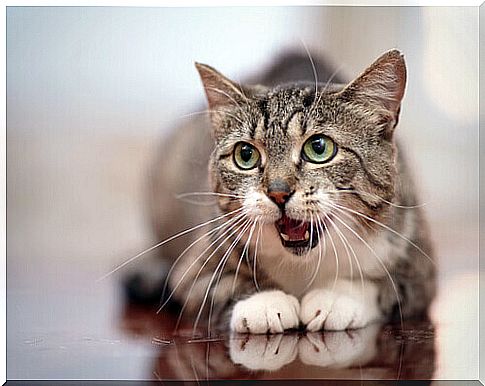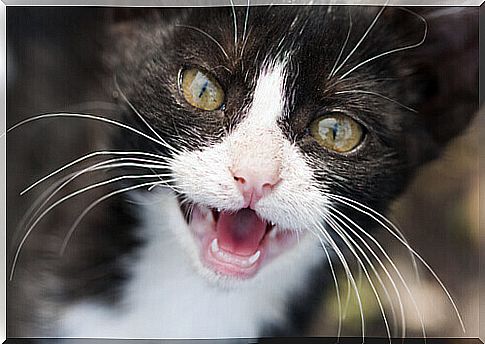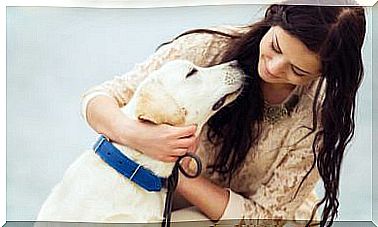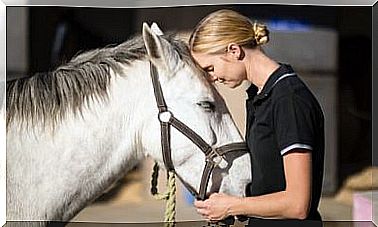Cat Snorts: Types And Causes

Animals, because they do not have the word, to communicate they emit sounds that always want to say or convey something. This is the case with the snorts of cats. By saying puffs, we can also say noises, since they emit several.
Understanding what our cat wants to tell us through these sounds is very important to understand him and strengthen our bond with him. Let’s see them together then.
The snorts of cats and other sounds

We already know that cats, as well as other animals, need to make sounds and make movements in order to communicate. We must always remember that they too have needs and emotions that they need to convey to those with whom they share life.
Therefore, it is normal for your pet to make sounds or make movements with which he tries to tell you something. Understanding its meaning will help you to improve coexistence with your pet and strengthen the bond that unites you.
Different sounds
The sounds we hear are of various types:
Murmurs
These could include the purring and the sound they emit through their throats when we get home. Usually, although they are heard, they are sounds made with the mouth closed and that indicate a pleasant sensation and the fact that they feel comfortable.
Purring is something innate in them, because they have been doing it since they are little, without forgetting that it is the mother cat who purrs her young, who in this way feel protected.
This is a sound that is widely used during mating, courtship, or when expressing very different emotions, such as joy or stress.
Forced sounds
Among these we can find:
- Grunts. When a cat grunts, it undoubtedly wants us to understand that it is absolutely not satisfied and can even go so far as to attack us.
- Hisses. They are usually a symptom of anger or being on the defensive. It’s a way of telling us to leave them alone, because that’s what they prefer at the moment.
- Puffs. They are released when the feline feels threatened and, although they may look a little like hissing, it is easy to recognize them because they are stronger and more explosive.
Vocal sounds
It is the classic sound emitted by cats: meow.
Cats normally meow because they need water or food, in the case of normal or prolonged meowing. When these are short and repeated, they may feel pain.
Other forms of communication of cats
As we said at the beginning, sounds aren’t the only means cats have to communicate. Here are others:

- Body language. Depending on the type of position that the cat assumes with the body or with parts of it, it will want to convey one thing or another. For example, with pricked ears it warns us that it is alert, while if they are forward it is because it is annoying. The upright hair warns us that he feels threatened.
- The tail. A cat’s tail has a lot to tell us, depending on the shapes and positions it assumes. An erect and waving tail indicates pleasure, while a curled one indicates anger. The tail down but tense denotes fear.
As you can see, there are many ways to be able to understand your cat a little better and, therefore, improve coexistence and strengthen your relationship.
Therefore, you will first have to learn what each sound and gesture of your feline means and then pay attention to its movements in order to identify what it wants to tell you in every single moment. With a little effort, you will be able to understand your cat better and help him with what he needs.








